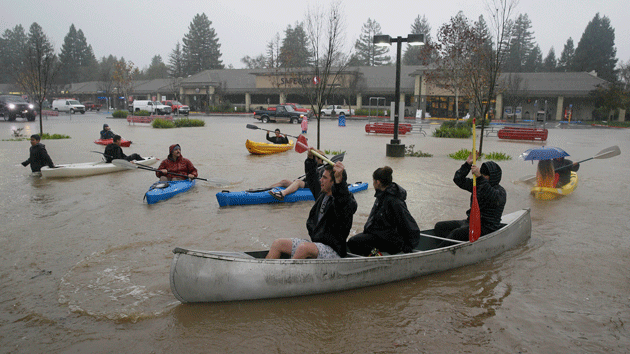
Over the past two weeks, California has gotten a deluge of rain, lifting its reservoir levels and hydrating the soil in a state that is in the midst of one of the worst droughts in history. The chart above shows the state’s drought levels pre- and post-storm, and thankfully, there’s a little less of the menacing “exceptional drought.”
In its weekly summary, the US Drought Monitor emphasized cautious optimism:
A wet December (to date) has provided California a foothold for drought recovery, but 3 straight winters of subnormal precipitation will take time (possibly several consecutive wet winters) to fully recharge the reservoir levels and subsoil moisture back to normal. With several more months still left in the wet season, it is possible that additional storms similar to the ones that just occurred will continue to chip away at the long-term hydrological drought, and the addition of lower temperatures would help build the snow pack. “Cautious optimism, but still a long way to go” would be the very short summary for this week’s California drought picture.
So how much rain would the state need to end the drought completely? 11 trillion gallons, according to a NASA study from two days ago. As CNN reported, that’s “the amount of water that flows over Niagara Falls in about 170 days’ time.”
The drought this year has been particularly scary because California’s reservoirs, which are supposed to supply farmers and communities with water in dangerously dry times, were already depleted after two previous years of drought. The rain over the past two weeks has helped restore this backup supply, though as the chart below shows, California’s reservoirs are only 58 percent as full as they usually are at this time of year.

















